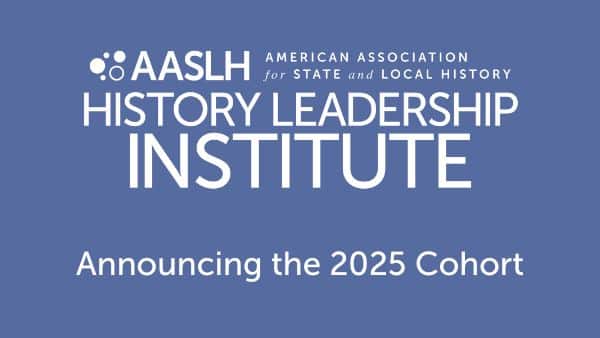We’re looking back in time – March 31, 2004, to be exact – to when the Small Museums Committee formed, and honoring the progressive folks who made up the inaugural committee.
Today we’re checking in with Carol Harsh, Director of the Smithsonian’s Museum on Main Street program. Although the Smithsonian is a large organization, Carol works with small organizations all around the country.
Here’s what she had to say:
 In reflecting back on it, it’s significant that the Small Museum Committee even exists. Small museums need to be recognized, since that describes over 75% of the country’s museums, and nearly half of them are in small towns. Innovations, such as the Small Museums listserv, where museum workers share experiences and answer each other’s questions, reduce the sense of isolation that used to be so pervasive. In addition, we can now learn about grant opportunities, training opportunities, connecting with field services across the states, and forging a nationwide virtual community.
In reflecting back on it, it’s significant that the Small Museum Committee even exists. Small museums need to be recognized, since that describes over 75% of the country’s museums, and nearly half of them are in small towns. Innovations, such as the Small Museums listserv, where museum workers share experiences and answer each other’s questions, reduce the sense of isolation that used to be so pervasive. In addition, we can now learn about grant opportunities, training opportunities, connecting with field services across the states, and forging a nationwide virtual community.
Working with Museum on Main Street, we often see that small museums are run by extremely committed volunteers, but they don’t have opportunities for professional training. Those organizationsusually don’t have the resources to send their staff to training meetings or professional conferences. That’s why the SMC is so important. The committee not only understands and addresses those needs, it has become the pre-eminent advocate for those museums.
The work of small museums is enormously important to the history and heritage of our country. No one else does this kind of collecting and storytelling of local history as well as these small community-based museums. It is difficult for large organizations to capture this vitality. Only a local organization can do that and do it well. That’s why the Smithsonian and other large organizations love to collaborate with small organizations.
Museum on Main Street provides resources and exhibitions, thus letting small organizations become part of a national effort. It’s not about hosting a Smithsonian exhibit, but using it as a platform to spotlight local history. This gives local communities the chance to show how their local story is both unique and an important part of a much larger national “story.” Using a traveling exhibit as a stepping- off point allows locally significant stories about the World War II home front, food, sports – you name it – to shine in the spotlight. The focus really is on local history.
This is the 20th anniversary for Museum on Main Street, and I was one of the co-founders. Through the years, I am enormously impressed with the energy, commitment, and expertise that small museums possess. It’s unbelievable! We see it all the time. Our exhibits come to town, but it’s the local energy and volunteerism that makes it all successful. People want to be involved in something that acknowledges and celebrates their own local history and culture. They want to have local ownership. That’s really good stuff!
I just have to say, we hear a lot about economic impact, programs, school children, and we are WOWED by what small museums do. We open the door and let them create the masterpiece. It’s really something. When a Museum on Main Street exhibit opens in a community, it’s not unusual for attendance figures to match or exceed the population of the town! What goes into it is a lot of work, many volunteers, and a joyous celebration of their own community.
In looking back at the first year and the first meeting of the Small Museums Committee, the leadership was excellent. It was a group of people who really believed in shining a light on small museums. It was such a good idea, so good to come together, and there clearly was a need for this. Some of the early work of the committee involved looking at the profile of a small museum and defining exactly what a small museum is. It was so important.
It certainly shows that in a small museum you wear more than one hat. Directors do fund raisers and school tours, and then they run the vacuum.
Small museums create their own destiny. They create a vision and realize it. They grab, define and portray the soul of a community.
Special thanks to Carol Harsh for taking time out to reflect back on the establishment of the Small Museums Committee and the importance of small museums.



